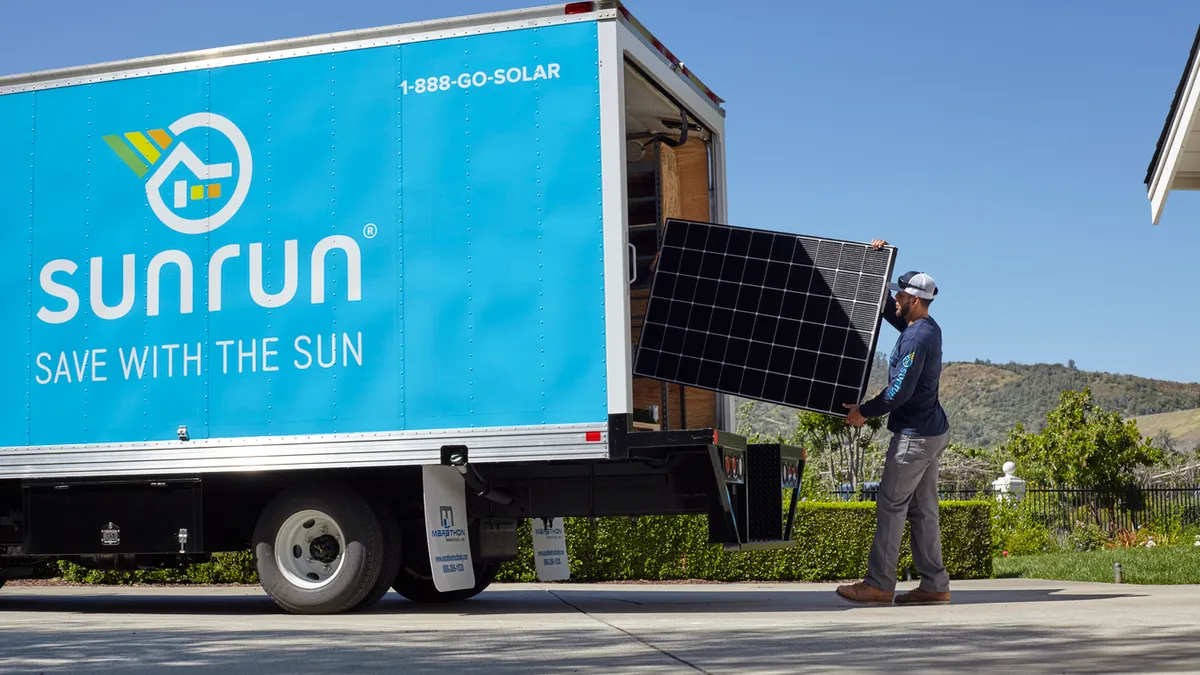Dive Brief:
- Sunrun has formed a partnership with Open Access Technology International (OATI) to deploy 1,000 distributed solar-plus-storage systems in Oahu, to inject 4.3 MW of capacity and fast frequency service into Hawaii Electric Company's (HECO) grid, Sunrun announced earlier this month.
- OATI and Sunrun will begin service of this virtual power plant in 2020, tapping behind-the-meter systems to respond to spikes in HECO's demand for the next four years.
- Hawaiian regulators have specified the need for more distributed energy as part of the island's goal for 100% renewable energy by 2045. In addition to its contract with OATI to establish grid services to dispatch renewable on several islands, HECO issued a request for proposal (RFP) in September for 900 MW of dispatchable renewables and storage.
Dive Insight:
Sunrun's virtual power plants — aggregated residential solar and energy storage systems — increasingly provide more services to the electrical grid as developers find new revenue streams for the distributed energy systems.
"This is part of a growing trend," Robert Harris, Sunrun public policy director, told Utility Dive.
At the beginning of the year, Sunrun won a historic bid to provide 20 MW of distributed energy for the ISO-New England capacity market.
The Oahu project, which will involve about 1,000 Brightbox home battery systems, is "the first of many" in the state. This is one of the largest demand response virtual power plant projects in the world, Harris said.
OATI's contract with HECO "exemplifies the shift to a distribution-centric grid," Sasan Mokhtari, president and CEO of OATI, said in a statement.
The OATI and Sunrun partnership offers fast frequency response from distributed systems, giving "the utility operator a longer time to bring on their generation," which takes longer to cycle, according to Harris. OATI's webSmartEnergy system and operations center can manage the grid in real-time, meaning the grid operator would not need to rely on day-ahead forecasts. The technology also has autonomous capabilities.
Sunrun has not done this type of non-wires alternative solution before, offering a system-wide focus.
Solar-plus-storage behind-the-meter systems could be tapped to respond to grid needs faster than conventional generators, but this latest project proves it can be done in a more cost competitive way than adding utility-scale generation, Harris said. "Generally any Brightbox system could provide this."
Besides approving OATI's partnership with HECO, Hawaii regulators have approved the build out of more demand response projects within HECO's service territory, creating opportunity for more distributed solar-plus-storage partnerships. Increasing the amount of distributed demand response is "cheaper than building a new power station... or having to keep [centralized units] open," Harris said. The success of the program could also lead the utility to defer investment in upgrading a substation.
Participating customers with DERs will receive on average $150 per year from the utility for responding to the call for energy from the grid, according to Harris. However, consumers have specific protections built in to their contracts to limit the amount of times their systems are expected to respond to situations where the grid risks going down. If their battery systems are fully or mostly charged, their individual system would also only be expected to dispatch power for up to 30 minutes, he added.
That is "about the time it takes HECO to bring online" its larger power plants, he said. Therefore, if the frequency shifts, Brightbox systems can immediately inject power back into the grid.
"A successful grid services project would reduce costs for the customers who participate, control and lower costs and provide stable reliable service for all customers and allow the aggregator to make a reasonable return," Peter Rosegg, HECO spokesperson, said via email.
The 900 MW RFP specifically carves out amounts for distributed resource response interaction on the individual neighboring islands, Harris said.
Brightbox has also been deployed in California, where Sunrun earned contracts in July to replace the capacity from a jet fuel power plant with residential solar-plus-storage.















